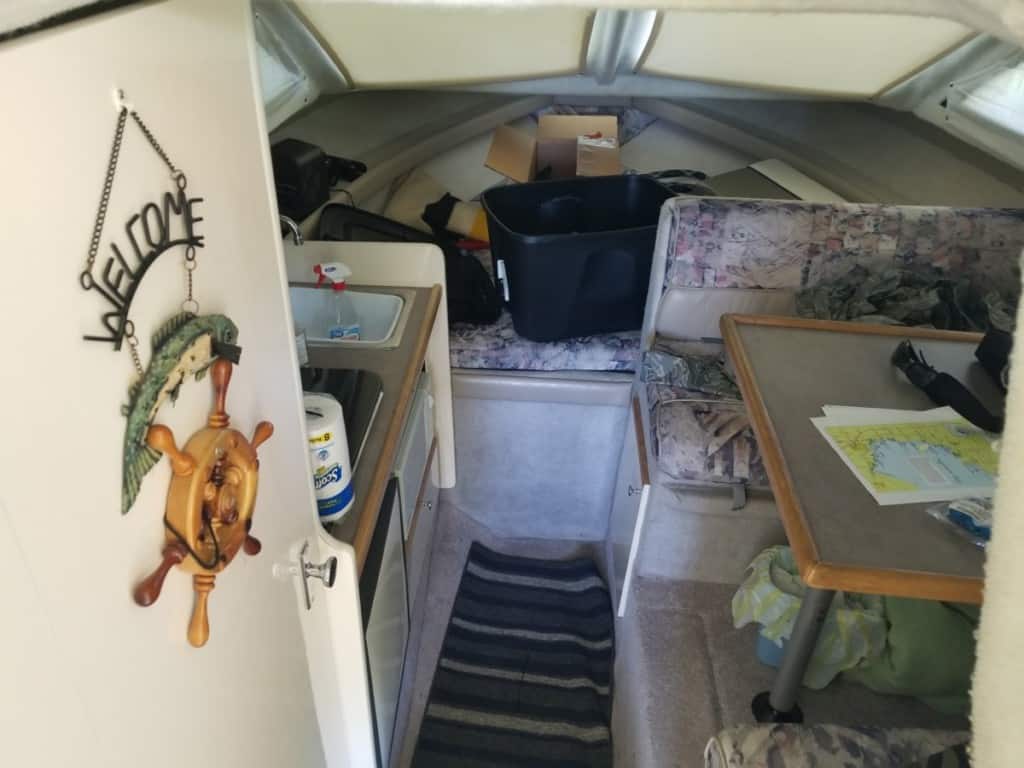Ahoy there, fellow boaters! If you own a boat with a cabin, you know how important it is to keep the space clean and comfortable for you and your passengers. One of the most common challenges boat owners face is the dreaded mold and mildew that can take hold in a boat’s cabin.
Not only are these unwelcome guests unsightly and unpleasant, but they can also cause musty odors and even pose potential health risks.
So, how can you prevent mold and mildew from taking over your precious cabin space?
In this article, we’ll dive into the causes of mold and mildew growth in boat cabins, the typical spots where they tend to lurk, and most importantly, effective strategies for removing and preventing them from returning. With the right knowledge and techniques, you can maintain a fresh and inviting atmosphere on your boat, making every trip an enjoyable experience.
How Mold Forms in a Boat’s Cabin
Mold and mildew are fungi that grow in damp and humid conditions. When there’s enough moisture and organic material present, mold spores can thrive and multiply. In the confined spaces of a boat’s cabin, moisture from humidity, condensation, or leaks can lead to the perfect environment for mold and mildew to grow.
Common areas where mold and mildew form in a boat’s cabin include:
- Upholstery and cushions
- Carpeting and flooring
- Walls and ceilings
- Under mattresses and bedding
- Storage compartments
- Kitchen and bathroom surfaces

How to Get Rid of Mold in a Boat’s Cabin
Now that we know what causes mold and mildew and where they typically form, let’s discuss how to get rid of them.
- Identify the source: To effectively get rid of mold and mildew, you first need to identify the source of the moisture problem. Check for leaks, condensation, or other areas where water may be entering your boat’s cabin. Fix any issues you find to prevent further mold growth.
- Clean affected areas: To clean mold and mildew from surfaces, use a mildew remover or a solution of bleach and water. Make sure to wear protective gloves and a mask to avoid inhaling mold spores. Scrub the affected areas with a brush or sponge, then rinse with clean water and dry thoroughly.
- The Centers for Disease Control and Prevention (CDC) recommends a bleach solution for cleaning mold. The recommended concentration is 1 cup (8 ounces) of bleach per gallon of water. It is important to use a non-ammonia soap or detergent when cleaning surfaces before applying the bleach solution, as mixing ammonia and bleach can produce toxic fumes. Always ensure proper ventilation when using bleach and wear protective gloves and eye protection.
- Please keep in mind that bleach may not be suitable for all surfaces, such as porous materials or certain fabrics like vinyl boat cushions and their stitching. It is essential to test the bleach solution on a small, inconspicuous area first to check for potential discoloration or damage.
- Remove and replace damaged materials: If mold and mildew have severely damaged materials like upholstery, carpet, or wood, it’s best to remove and replace them to ensure that all mold spores are eliminated.

How to Prevent Mold in Your Boat’s Cabin
Now that we’ve discussed how to get rid of mold and mildew, let’s explore some tips for preventing them in the first place.
- Maintain proper ventilation: Good airflow is crucial for preventing mold and mildew growth. Make sure to open windows and hatches regularly to allow fresh air to circulate throughout your boat’s cabin. Installing vents or fans can also help improve airflow.
- Control humidity: Use a dehumidifier or moisture-absorbing products to keep humidity levels in check. You can also use air conditioning to help reduce humidity levels, especially during hot and humid weather.
- Keep surfaces clean and dry: Regularly clean your boat’s cabin surfaces and make sure to dry any wet or damp areas. Pay particular attention to areas where moisture tends to accumulate, like storage compartments and under mattresses.
- Store wet items properly: Avoid storing wet items like towels, clothes, or equipment in your boat’s cabin. Make sure to dry items thoroughly before storing them to prevent mold and mildew growth.
- Check for leaks: Regularly inspect your boat for any leaks or potential sources of moisture, such as around windows, hatches, and plumbing. Address any issues promptly to prevent mold and mildew growth.
- Use mildew-resistant materials: When choosing upholstery, bedding, and other materials for your boat’s cabin, opt for mildew-resistant fabrics and materials that are less likely to harbor mold and mildew.
- Marine-grade vinyl: Marine-grade vinyl is designed to resist mold and mildew growth due to its water-resistant properties. It is commonly used for boat seat cushions and can be wiped clean easily.
- Solution-dyed acrylic fabrics: Solution-dyed acrylic fabrics, such as Sunbrella, are resistant to mold and mildew growth. These fabrics are often used for boat cushions, covers, and curtains.
- Olefin fibers: Olefin fibers, like those found in marine carpeting, are inherently mold and mildew resistant. These fibers are also water-resistant, making them suitable for damp environments like boat cabins.
- Synthetic bedding materials: Synthetic bedding materials, such as polyester, are more resistant to mold and mildew than natural fibers like cotton. Consider using polyester sheets, pillowcases, and blankets in your boat cabin.
- Quick-dry foam: Quick-dry foam is designed to drain water quickly and promote airflow, reducing the chances of mold and mildew growth. This foam can be used for cushions, mattresses, and other upholstered items in your boat cabin.
- Waterproof mattress protectors and covers: Using waterproof mattress protectors and covers can help keep your bedding dry and reduce the likelihood of mold growth.
- Use mold inhibitors: There are various mold-inhibiting products available, such as sprays and paints, that can help prevent mold and mildew growth on surfaces. Apply these products according to the manufacturer’s instructions to help keep mold and mildew at bay.
Final Takeaways
Preventing mold and mildew in your boat’s cabin is essential for maintaining a clean, healthy, and pleasant environment on your vessel. When you understand how mold and mildew form, can address any moisture issues, and take the necessary steps to maintain proper ventilation, control humidity, and keep surfaces clean and dry, you can effectively prevent mold and mildew growth in your boat’s cabin.
Following these tips will not only make your boating experience more enjoyable but also help protect your investment in the long run. So, enjoy your time out on the water, knowing that you’re taking the right measures to keep your boat’s cabin mold and mildew-free.
Happy Boating!
